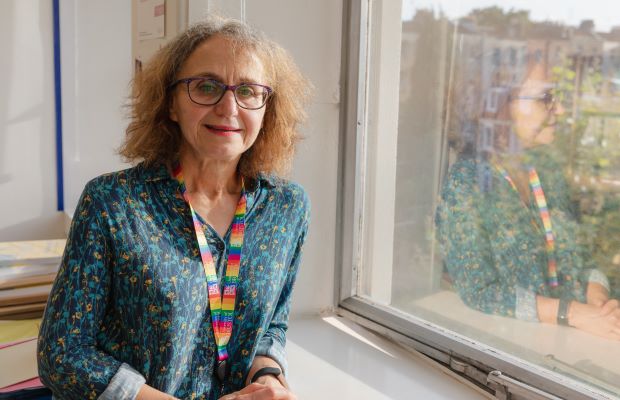
A day in the life: the researcher looking at genes and heart disease
Professor Deborah Lawlor is looking into the risk factors and genes associated with heart disease. Discover what a day in the lab looks like for her.


06:30
I’m not a morning person; I need an hour just to collect myself. I walk to work and when I have time I take the longer, 40-minute route into work at the University of Bristol, across the the Clifton Downs.
I’m an epidemiologist, which means studying what causes diseases at a population level. I originally trained and worked as a doctor. I saw that you could treat someone in hospital, but then they go back into the same environment that led to all those problems in the first place. As an epidemiologist, I can look at what we can do to prevent the things that lead to people becoming ill.
09:00
My work day sometimes begins with a meeting with the rest of the group that I work with. Our diverse group of 30 or so people includes clinicians, data scientists, statisticians, and epidemiologists and others from diverse backgrounds. We all work with longitudinal studies. These follow groups of people over many years, so we can see how health and risk factors change over time. It lets us understand whether what we see in the lab, under very controlled circumstances, is also happening in the wider population in real life.
The BHF has helped fund two studies that I work with. Since 2007 the Born in Bradford study has followed over 13,000 children from their birth. It’s a very special study to me, not just because I’m from Bradford. There is a very large South Asian population in Bradford. This study allows us to better understand why there’s a greater risk of diabetes and heart disease in this community; whether this risk starts in early life; and whether risk factors for heart disease and diabetes can be picked up before a child is even born, during pregnancy.
Children of the 90s is another study, which has followed around 14,500 people born in the Avon area between 1991 and 1993. It’s in its 30th year and the original children are now having their own children, so we’re able to look at health across three generations. We have people come into the lab regularly and do lots of measures, including heart and vascular scans. We also use questionnaires and smart devices to monitor physical activity. I’m always grateful people give up their time for this research.
Want to get fit and healthy?
Sign up to our fortnightly Heart Matters newsletter to receive healthy recipes, new activity ideas, and expert tips for managing your health. Joining is free and takes two minutes.
I’d like to sign up10:00
I’ll spend the rest of the morning either standing or sitting at my desk, working on my computer. Sometimes I read through draft papers, other times I’m analysing data. I might be looking at certain genes which affect levels of glucose (sugar) in the blood. By plotting this on a graph against people’s heart disease outcomes, we can see whether higher levels of blood sugar cause different heart diseases. And we can look at this together with other factors such as age, ethnic background, and whether someone is a man or a woman.
12:00
My lunch is normally leftovers from the night before. If it’s a Friday, I’ll head to Southmead Hospital for the afternoon. There I supervise clinical trainees doing a study looking at the relationship between heart disease and fertility problems and IVF. One of the most rewarding parts of my job is working with students. As well as watching them progress, there’s a chance to learn from them. They are the ones giving us new ideas, such as how to use smart watches to track hand movements so we can measure people’s eating or smoking patterns.
18:00
Some evenings we have meetings with groups of participants to see what they want out of their study. It’s important for us to understand what they want to be researched.
19:30
Almost every evening I go for a run before dinner. I love running outdoors, especially going into the woods. I’ve got a head torch so that I can run there even in winter, when it’s dark. It’s a great way to relax.
Find out more
Professor Deborah Lawlor has published over 680 scientific papers and was awarded a CBE in 2017 for her services to social and community medicine research. She was recently named as BHF Professor of Cardiovascular Science and Clinical Epidemiology at the University of Bristol. This comes with funding of over £500,000 over five years, to help her team’s vital work in understanding why some people are more at risk of heart and circulatory disease.
- Discover what other BHF Professors are working on.
What to read next...
Learn more about our research into risk factors

Donate today



